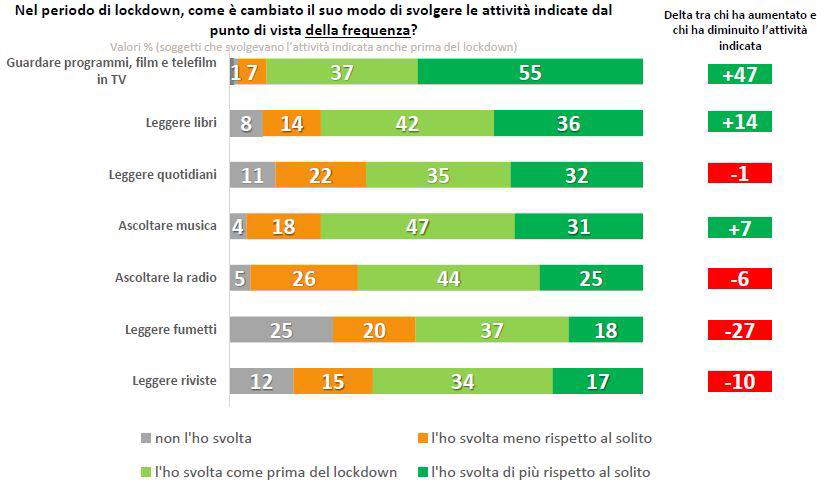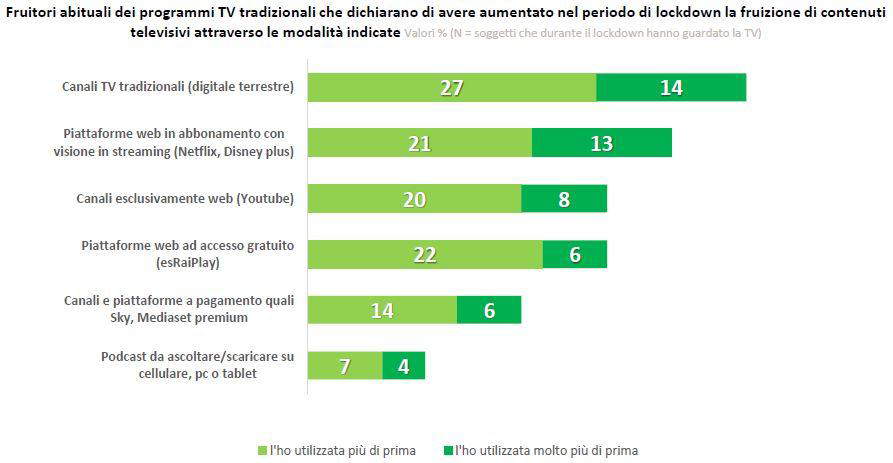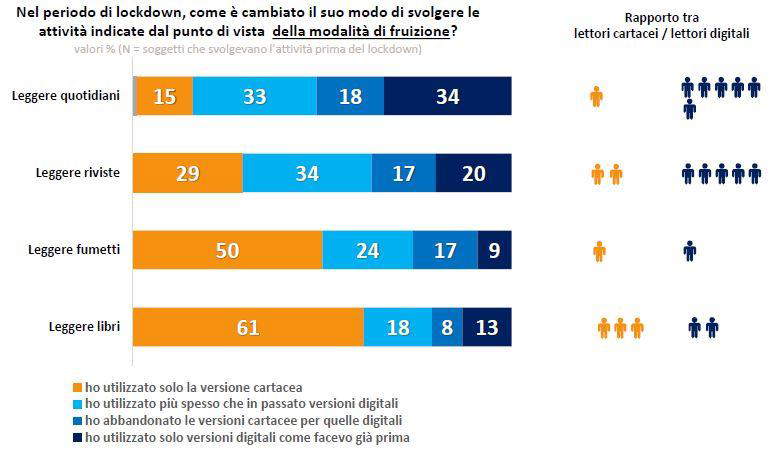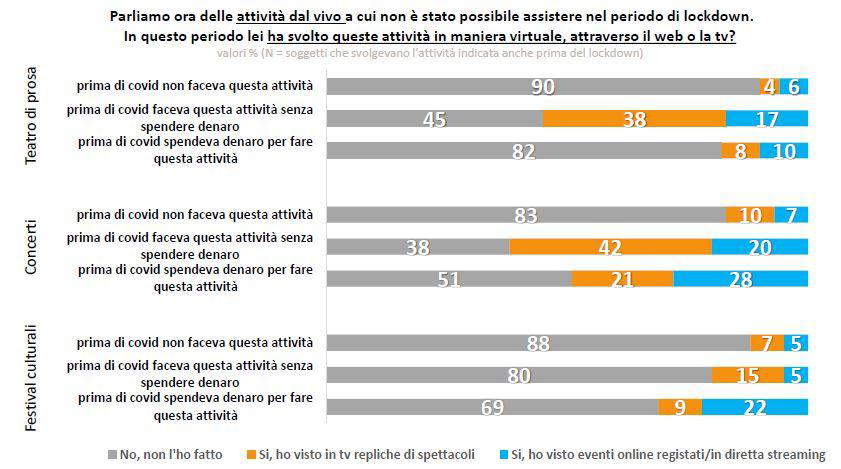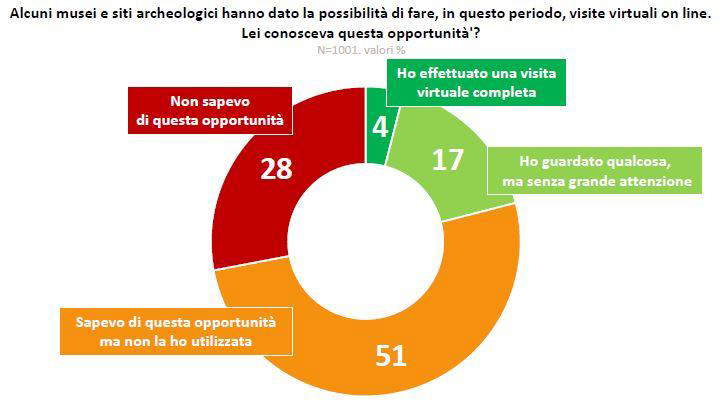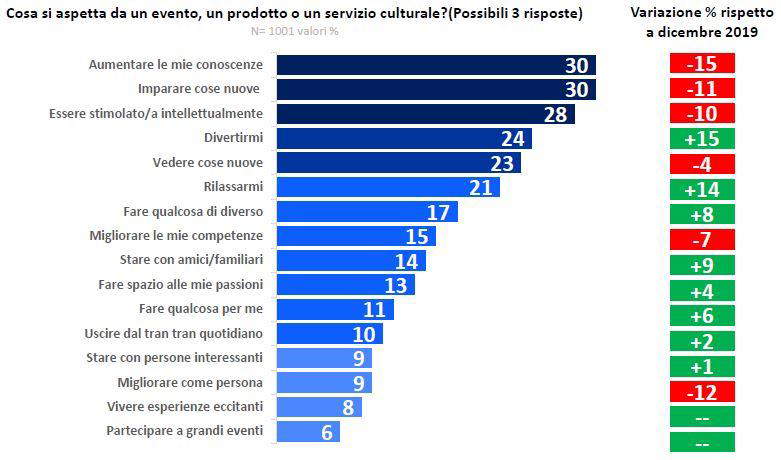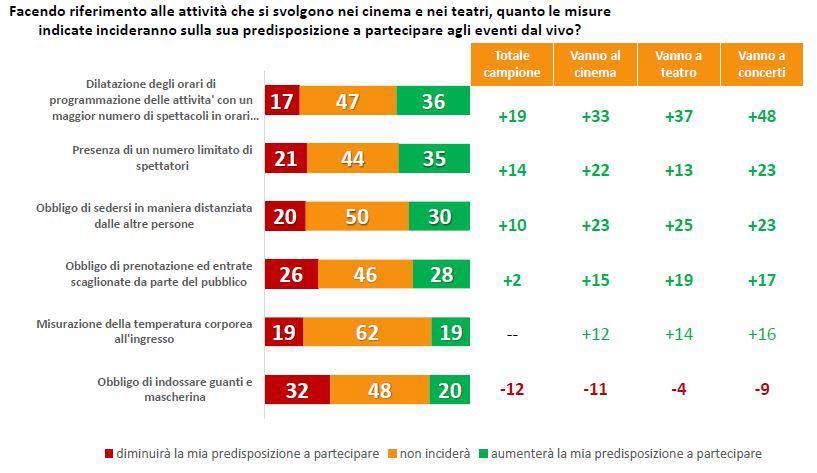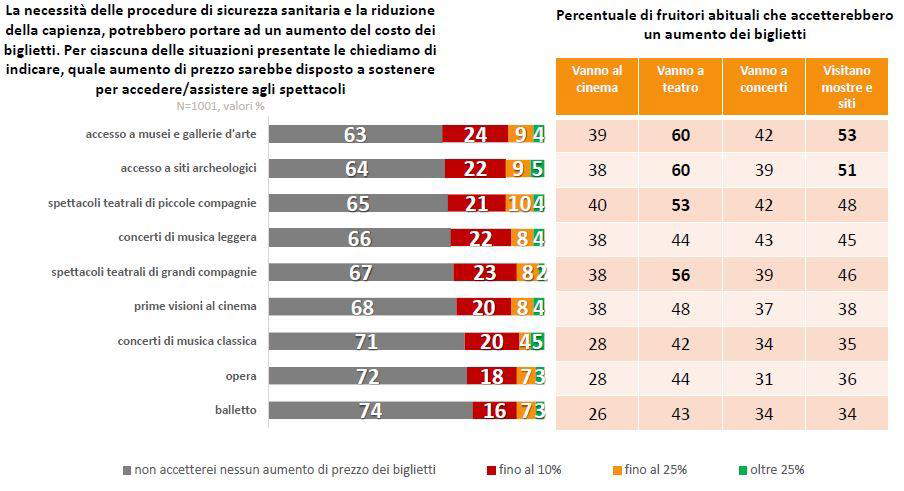by Redazione , published on 04/07/2020
Categories: News
/ Disclaimer
Virtual tours of Italian museums have been a flop: only 4 percent have looked at them with interest. The percentage of Italians who want to be entertained by culture is growing.
Meager results for virtual visits and, in general, for digital products offered by museums. This is what emerges from a quantitative survey commissioned by Impresa Cultura Italia-Confcommercio to Swg to analyze “cultural consumption” during the so-called lockdown, and carried out through interviews conducted between May 18 and 21 on a sample of 1,001 Italians in an age range of 18 to 74, with gender, age, geographic area and size of municipality of residence chosen as representative of the entire population.
The survey showed (fig. 1) that the percentage of Italians watching television (activity increased by 47% during home segregation), reading books (+14%) and listening to music (+7%) increased, while reading fewer comic books (-27%) and magazines (-10%), and listening to less radio (-6%). Slight decline for newspapers (-1%). There has been a strong increase toward digital content (fig. 3): 33% read digital newspapers more often than in the past, a percentage that rises to 34% if we talk about magazines, and there is even an 18% of Italians who have abandoned print newspapers to go digital (17% for magazines). Books in paper format hold up better (61% have read them only in paper), while 8% have switched from paper to digital, and 18% have read digital books more often than in the past.
 |
| Fig. 1 - The activities related to culture |
 |
| Fig. 2 - The ways in which television content is enjoyed. |
 |
| Fig. 3 - The switch to digital |
If digital reading is doing well, online culture has been a flop (Fig. 4): 90 percent of those who previously did not see theater online continued not to do so (only 6 percent watched streaming shows), 83 percent of those who were not used to concerts digitally did not watch them (only 7 percent were convinced), while even worse for cultural festivals, with a paltry 5 percent attending online events (among those who, before, had never done so: 88 percent of these continued to ignore online digital festivals, while 7 percent watched reruns on television). Better, however, for those who were already accustomed: among those who, before Covid, spent money to watch culture online, 10% watched theater, 28% concerts, and 22% literary festivals (but there are also percentages of 82%, 51%, and 69% of those who did not follow their favorite activities online).
The worst figure, however, is definitely virtual visits to museums and archaeological sites (fig. 5), a real flop: only 4% made a full virtual visit, compared with 17% who looked at something but without much attention. As many as 28 percent did not even know about the existence of online virtual visits, and 51 percent knew about them but did not use them.
However, this is not the fault of museums, which, on the contrary, should insist on this kind of activity. In fact, the stress due to the coronavirus has greatly affected the expectations of culture (Fig. 6): increased (+15%) compared to December 2019 the number of those who want to have fun with cultural activities, while there is a +14% for those who want to “relax,” a +8% for those who want to “do something different.” On the other hand, the percentages of all those who want to improve themselves from culture plummet: so minus sign for those who want to expand their knowledge (-15%), learn new things (-11%), be intellectually stimulated (-10%), see new things (-4%), improve their skills (-7%). That Premier Conte had a point when he referred to “our artists who entertain and enthuse us so much”?
 |
| Fig. 4 - Live performances in digital |
 |
| Fig. 5 - Virtual visits to museums and archaeological sites |
 |
| Fig. 6 - The expectations on cultural activities |
 |
| Fig. 7 - The impact of prevention measures on participation in live performances |
 |
| Fig. 8 - The liking on the hypothesis of ticket increase |
Finally, one last interesting aspect concerns ticket price increases (Fig. 8). Respondents were asked whether they would be willing to support a ticket increase to meet the needs due to the health emergency: on average, about 7 out of 10 Italians would not accept any increase in ticket prices, with the highest percentage of diehards among ballet lovers (74% don’t want to know about price increases), while the softest are museum-goers (63%).
The survey notes, in any case, the importance of digital media for Italians. “Digital,” says Carlo Fontana, president of Impresa Cultura Italia-Confcommercio, “has been the companion of a very difficult phase for all of us and has shown that it can be, used wisely, an excellent channel for spreading culture. But some experiences, such as live entertainment, can hardly be mediated by a screen. Therefore, without prejudice to the possibility of continuing to use digital offerings, we believe that in a short time the public will return to live culture because this desire, even during the lockdown, was never extinguished.”
 |
| Museums, virtual tours are a flop. Italians with culture want to have fun |
Warning: the translation into English of the original Italian article was created using automatic tools.
We undertake to review all articles, but we do not guarantee the total absence of inaccuracies in the translation due to the program. You can
find the original by clicking on the ITA button. If you find any mistake,please contact us.
